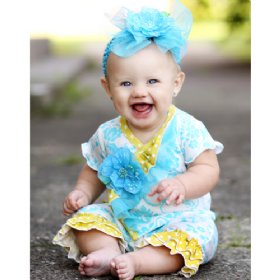 As a new parent, you want your child to be safe while at home and on the road. Modern car seats offer a plethora of safety measures to ensure that your little one stays secure while traveling to your destination. When used correctly, car seats can reduce the risk of injury by 71 to 82 percent, according to the American Automobile Association. Using a child safety seat is the best protection you can provide for your child when traveling by car and every state in America requires infants and small children to be restrained while riding. Protect your new bundle of joy by following some simple car seat safety tips.
As a new parent, you want your child to be safe while at home and on the road. Modern car seats offer a plethora of safety measures to ensure that your little one stays secure while traveling to your destination. When used correctly, car seats can reduce the risk of injury by 71 to 82 percent, according to the American Automobile Association. Using a child safety seat is the best protection you can provide for your child when traveling by car and every state in America requires infants and small children to be restrained while riding. Protect your new bundle of joy by following some simple car seat safety tips.
Choose a Modern Safety Seat – Child safety seats should always meet or exceed the Federal Motor Vehicle Safety Standard 213, according to KidsHealth.org. No one seat is considered the “best” or “safest,” as the only safe seat is one that fits your child, is properly installed, fits well in your vehicle, and is used correctly each time you travel. Do not use a car seat with any visible cracks or one that has been in a moderate to severe crash. Ensure that your car seat has not been recalled by contacting the manufacturer or the National Highway Traffic Safety Administration.
Install the Seat and Have It Inspected – Children should ride in rearward-facing safety seats until they are two years of age or reach the height and weight limit outlined in the instruction manual. Every car seat needs to be installed using your vehicle’s seat belt or the lower anchors of the LATCH system to secure in place. Place the car seat in the back seat and ensure that it fits snug. When moved from side-to-side and back-and-forth, no more than 1 inch of space should be visible. Once installed, bring your vehicle to your local fire station or car seat inspection station to have certified technicians inspect your child car seat for proper installation and placement, often free of charge.
Fit the Baby in Correctly – It’s vital to properly position your child in the harness for both comfort and safety. Rear-facing car seats feature harness straps that should always lie flat, never twisted. Thread the straps through the slot that is at or below your child’s shoulders. Convertible seats often have higher weight limits when placed in the rear-facing direction than most infant carriers, and are intended for use by children who have outgrown their infant car seats but are still less than two years of age. Convertible car seats can also be forward-facing and harnessed in the same manner as rear-facing seats. Harness straps should be snug enough to allow no extra material to be pinched at the shoulder. The chest clip should be at armpit level.
Provide Infants with Neck Support – Rear-facing infant and convertible car seats should be reclined at a 30 to 45 degree angle, according to The American Academy of Pediatrics. Seats that are too far upright can cause baby’s neck to flop forward, resulting in breathing problems for infant riders. Infants require extra neck support which can be easily achieved with a baby head or neck pillow. The ergonomic shape of these car seat insertions feature plush fabric to give baby maximum comfort and provides side-to-side neck support.
Provide a safe environment for your child while traveling in the car by using a child safety seat that is designed for their size and offers the best in safety features. Advancements in car seat technology help to ensure that cars and car seats keep kids safe, but it’s up to every parent to install and place children in car seats correctly.
WAIT! Before you leave us, check out some of the recent blog entries below and peruse the rest of the Baby Bling Street website.
• Five Great New Mom Gifts Under $25 at Baby Bling Street
• New Fall and Winter Baby Fashion Collections
